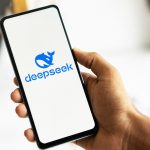Leveraging Pre-Built Persona Datasets for Enhanced AI Interactions
Generative AI and large language models (LLMs) offer a powerful feature known as "personas," enabling users to simulate conversations and interactions with specific individuals, whether real historical figures or fictional characters. Traditionally, crafting these personas required users to meticulously describe the desired characteristics, a process that can be time-consuming and demanding, especially when dealing with multiple or complex personas. A novel approach simplifies this process by utilizing readily available datasets containing millions, even billions, of pre-written persona descriptions, eliminating the need for users to construct personas from scratch.
These persona datasets offer a wealth of diverse and detailed descriptions, allowing users to quickly find and incorporate pre-made personas into their AI prompts. This streamlined approach significantly reduces the effort required for persona creation, particularly when conducting large-scale studies or exploring a wide range of character types. Users can simply search the dataset for relevant personas, copy the descriptions, and paste them directly into their prompts, effectively "plugging and playing" with diverse personalities and perspectives. This innovation empowers users to focus on the interaction itself rather than the tedious process of persona construction.
Exploring the Functionality and Benefits of Persona Datasets
The process of using these datasets is straightforward. Users can select a persona "as is" directly from the dataset, or they can further customize a chosen persona by adjusting its characteristics to suit their specific needs. Alternatively, a chosen persona can serve as a baseline, prompting the AI to generate variations based on that core description. Even more complex scenarios can be explored by selecting a set of personas and defining how they interact with each other within the AI environment. These diverse applications cater to a wide range of uses, from individual experimentation to large-scale data generation and analysis.
The advantages of using persona datasets extend beyond convenience. They provide access to a vast library of diverse personalities, enabling users to explore interactions with a broader spectrum of perspectives than they could likely conceive on their own. This can be particularly valuable for researchers, educators, and content creators seeking to simulate realistic conversations, explore different communication styles, or generate diverse synthetic data. Furthermore, these datasets can serve as a valuable tool for training and practicing interpersonal skills, such as counseling or negotiation, by providing a safe and controlled environment to interact with a wide range of simulated personalities.
A Closer Look at FinePersonas and PersonaHub: Examples of Persona Datasets
Several AI persona datasets are publicly accessible, offering vast collections of readily available descriptions. FinePersonas, hosted on HuggingFace, boasts over 21 million detailed personas, emphasizing diversity and control in synthetic text generation. Another prominent dataset, PersonaHub, boasts a staggering 1 billion personas, representing a significant portion of the world’s population. These personas, while currently focused on major characteristics, are intended to be further refined with more detailed information in future versions. These examples illustrate the scale and ambition of these datasets, aiming to provide comprehensive resources for diverse AI interactions.
Using FinePersonas as an example, one can select a pre-written description, such as "A high school physics teacher who enjoys applying physics concepts to various sports, curious about the effects of water resistance and body positioning in swimming." This description can be directly pasted into an AI prompt, instructing the AI to embody this persona. The AI can then simulate the teacher’s thoughts while watching a swim meet, incorporating their physics background into their observations. This simple example demonstrates the ease and effectiveness of using these datasets for generating realistic and engaging AI interactions.
Adapting and Expanding Personas: Flexibility and Customization
The use of persona datasets isn’t rigid. Users can adapt and expand upon the provided descriptions, tailoring them to their specific needs. For instance, the physics teacher persona from FinePersonas can be modified to become an art teacher, prompting the AI to generate a different perspective on the same swim meet, focusing on artistic elements like rhythm, flow, and visual patterns. Furthermore, users can instruct the AI to generate variations of a given persona, exploring different academic disciplines or professions based on a core description. This flexibility allows for extensive exploration and experimentation within the AI environment.
The capability to invoke multiple personas simultaneously expands the potential of these datasets significantly. For instance, a user could simulate a discussion among a group of teachers from various academic backgrounds, each offering a unique perspective on the swim meet based on their respective fields of expertise. This approach allows for the creation of complex and dynamic interactions, simulating real-world scenarios and facilitating deeper exploration of diverse viewpoints.
Key Considerations for Selecting and Utilizing Persona Datasets
When choosing an AI persona dataset, users should consider several key factors. The size of the dataset, the level of detail provided in the descriptions, the diversity of persona types, and the relevance to the user’s specific interests are crucial aspects. Additionally, potential biases embedded in the dataset, ease of use, associated costs, copyright considerations, and overall availability should be carefully evaluated. Understanding these factors ensures that users select a dataset that aligns with their needs and objectives.
The vast majority of AI persona datasets are generated automatically using AI or online tools, enabling the creation of massive collections with millions or even billions of entries. While this automated process is efficient, it’s crucial to acknowledge the human effort involved in curating and organizing these datasets, ensuring their quality and usability. The creators of these datasets play a vital role in making these vast resources accessible and valuable to users.
Conclusion: Working Smarter with AI Persona Datasets
While many users might find it sufficient to craft their own personas for individual AI interactions, these datasets offer invaluable resources for larger-scale projects, complex simulations, and explorations of diverse perspectives. They simplify the process of persona creation, allowing users to focus on the interaction itself rather than the tedious task of crafting descriptions from scratch. By leveraging these readily available resources, users can "work smarter," streamlining their workflows and maximizing the potential of generative AI for research, education, content creation, and a variety of other applications. These datasets represent a significant advancement in the field of AI, empowering users to explore the vast landscape of human personalities and perspectives with unprecedented ease and efficiency.



